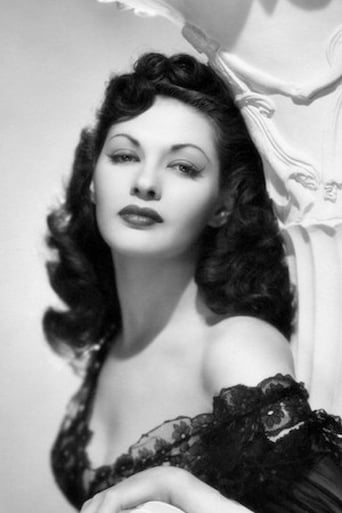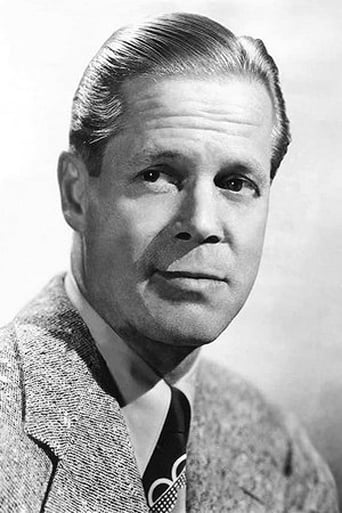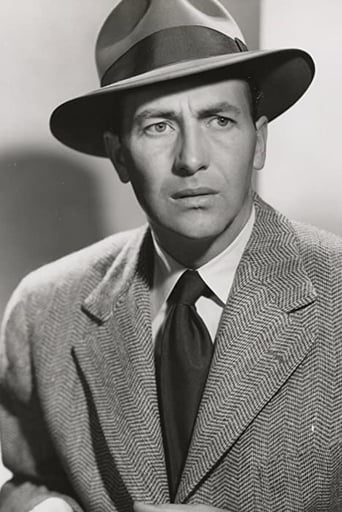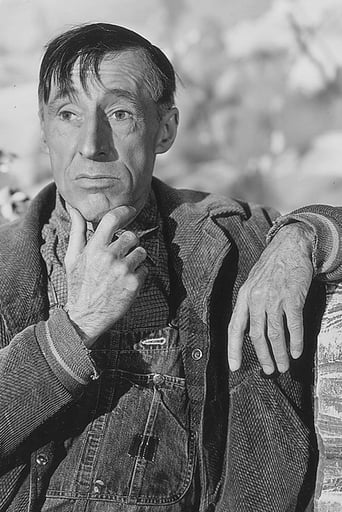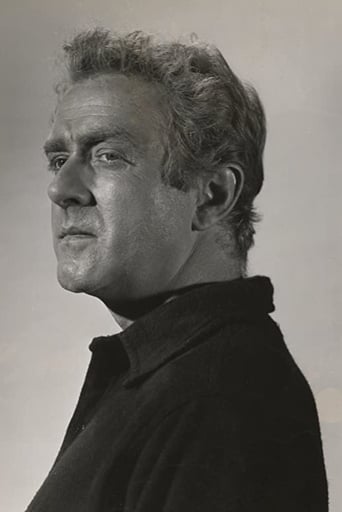Plantiana
Yawn. Poorly Filmed Snooze Fest.
Greenes
Please don't spend money on this.
Stephanie
There is, somehow, an interesting story here, as well as some good acting. There are also some good scenes
Brooklynn
There's a more than satisfactory amount of boom-boom in the movie's trim running time.
zardoz-13
Before he directed "Black Bart," George Sherman had helmed over 40 B-westerns. Despite his prolific output, Sherman challenged John Ford for artistry mastery of the genre. Nevertheless, "Black Bart" qualifies as an entertaining but formulaic tongue-in-cheek oater. Three scenarists--Luci Ward, Jack Natteford, and William Bowers—knew something about writing horse operas. Ward & Natteford collaborated together on 11 westerns, including "The Last Bandit," "Return of the Badman," Blackjack Ketchum, Desperado," and "Badman's Territory." William Bowers wrote "The Law and Jake Wade," "The Sheepman," "Support Your Local Sheriff," "The Gunfighter," and "Advance to the Rear." Ostensibly about a real life character who used the alias "Black Bart," this colorful western takes place in California and concerns a clever bandit who dresses like Zorro and skillfully wields double-barrel, sawed-off shotgun. He robs stagecoaches, and his legend spreads across the southwest much to the chagrin of the Wells Fargo Company. Unlike the remake, "Black Bart" unfolds in flashback narrated by outlaw Jersey Brady (Percy Kilbride of the "Ma & Pa Kettle" series at Universal. According to Brady, our notorious protagonists, Charles E. Boles (Dan Duryea of "Winchester 73") and Lance Hardeen (Jeffrey Lynn of "Underground") are being taken to the hanging tree by the authorities because they robbed two banks, rode out on stolen horses, and took the mayor's wife with them in the same day. Meantime, Jersey has planted explosives at the base of the tree, and he blasts the tree, gets the drop on the lawman with his rifle. Afterward, the three outlaws split up, with Boles decides to ride to California, while Lance talks about heading to Texas. Boles prefers to be done with reckless Lance. Lance was the one who brought along the mayor's wife during their twin-bill bank robbery. "You're bad news, Lance," Boles complains, "you're not interested in growing old." "There ain't no permanence in this business," Jersey observes. "Just begin to like somebody and he turns up dead." Lance points out, "You lose a lot of people you don't like that way, too." Unlike Jersey and Lance, Boles aims to make a stake and then turn respectable. Lance laughs at Boles' ambition, "You don't have a respectable bone in your body. You've got larceny pumping through your bones the same as me. You'll never make it." The three have $3-thousand buried nearby, but Lance and Jersey double-cross Boles and leave him afoot so he cannot claim his share. They ride off, while he pulls that $3-thousand wad out of his pocket. Indeed, Boles has the last laugh on Lance. Sherman makes a clever transition to California. As Boles rides into another standard-issue western town, a covered wagon passes in front of the camera, and stenciled on the canopy is Sacramento. Typically, a set of graphic titles would have been superimposed on the screen to identify the setting, but this organic introduction looks far better. Boles drifts into a bar and encounters an old friend Clark (John McIntire of "Backlash"), who invites him to sit down. Clark had been participating in a conversation with a Wells Fargo representative. Clark informs Boles that he has become a legitimate lawyer because there are no records to condemn him as a criminal. Clark concocts an audacious scheme based on the widespread discovery of gold in the state. Indeed, Clark is referring to the Sutter's Fort gold rush. Clark poses a sarcastic question to Boles:"How would you like to be in the banking business?" Multiple newspaper headlines appear about the celebrated gold rush. Afterward, we catch our first glimpse of Boles dressed up in black, riding a galloping black horse, and wearing a black bag over his face. He robs his first stagecoach. Before long, Wells Fargo has placed a $10-thousand bounty on Black Bart's head. You see, Boles and Clark have gone into business. Inevitably, Lance and Jersey show up, and they persuade the stagecoach company to hire them as drivers. Things get even livelier as dance hall girl Lola Montez (Yvonne De Carlo of "Brute Force") arrives via Wells Fargo in Sacramento. She is riding on the same coach that Lance and Jersey have taken, and they admire her diamonds worth over $100-thousand dollars. Naturally, Black Bart strikes."Bend of the River" lenser Irving Glassberg's Technicolor cinematography is vivid and some of the scenery looks imposing. The other natural beauty is not mountainous. De Carlo performs a dance number that shows a lot of leg. The dialogue is above-average and leavened with humor. Duryea makes a good outlaw, but Lynn seems distinctively out of place. Percy Kilbride serves as comic relief, and there is a surprise ending. In some ways, "Black Bart" surpasses "Ride to the Hangman's Tree." The amazing thing is that Universal Pictures was able to insert some of the action footage from this 1948 movie into the 1967 remake.
alexandre michel liberman (tmwest)
Yvonne de Carlo was a pretty girl, but somehow they gave her roles where she was supposed to be astonishing beautiful making all men fall for her. She wasn't that great, as a matter of fact very few are. "Salome Where She Danced" was one of the worst films I have ever seen and Black Bart saves itself because of a decent script and good actors like Dan Duryea, Jeffrey Lynn and Percy Killbride. Masked main characters at those times (1948) used to be heroes, like the Zorro and the Durango Kid. They wore their masks to defend poor people's rights, or the law. In Black Bart, Duryea's mask is for pure self interest, but in the film he is not quite the bad guy, the spectator will sympathize with him. In those westerns where the outlaw was the hero, he either had to die at the end, or go to jail for a number of years, with his woman waiting for him. That made them different from the standard "good guy happy ending". Conclusion: any western with Dan Duryea, the eternal Waco Johnnie Dean (Winchester 73) is worth seeing, even this average one.
AnnieLola
This film manages to be relatively non-formulaic, and even more non-historical, though the real Black Bart was indeed named Charles E. Boles as portrayed. British-born Boles, however, did not conduct his outlaw career as a Zorroesque black-clad horseman, but hiked to all his holdups and wore a long linen duster, with a flour sack over his head. He was also pushing 50 when he started robbing the stage. So much for a romantic image! If the intention was to make Bart/Boles a dashing figure, I think another actor would have been a better choice than Dan Duryea, who after all pretty much built his career on playing creeps. But it's always interesting to see a departure, and the script is more clever than that of the routine horse opera of the day.As Lola Montez, Yvonne De Carlo makes no effort at a real characterization of the famous Countess (former mistress to Ludwig I of Bavaria), but acts-- well, like Yvonne De Carlo, delivering her lines in her usual flat New World tones. The witty, volatile and multilingual Lola (nee Eliza Gilbert), though Irish by birth, affected a sort of Spanish accent to go with her assumed Sevillian identity. De Carlo's dancing, I fear, bears little resemblance to Lola's, but it's always a pleasure to watch Yvonne in her early roles; this film came only three years after her dazzling debut in 1945's "Salome, Where She Danced", in which she played a quasi Lola Montez, thereby confusing the record considerably.In reference to this: the real Lola never danced as Salome nor visited Arizona, and the town there called "Salome, Where She Danced" was named in 1904, and for quite another lady. To play Lola or a quasi-Lola, De Carlo does certainly fit the bill visually as a stunning blue-eyed brunette with a memorable figure. As to Lola ever encountering Black Bart-- well, when he began his career as a highway robber in 1875 Lola had been in her grave for fourteen years. So much for romance!
bob the moo
Three thieves in the old west decide to split up their money and go their separate ways. However Lance and Jersey try to double-cross Charlie and leave him. Some time later Lance and Jersey come across Charlie, who appears to be doing well as a rancher. However the mysterious Black Bart is robbing Wells Fargo stagecoaches with help from inside information. Things are complicated by the arrival of the beautiful singer Lola Montes who attracts interest from Lance, Charlie and Black Bart himself.This is a standard western that never threatens to replace John Ford's westerns at the top of the list of greatest of all time. However it does have plenty of things that make it entertaining to watch. The story is a mix of mystery with some nice twists before the tragic but witty finale. The film never really sags and manages to mix action with romance with humour with western. It's not the best film ever made but it is a gentle bit of entertainment.Dan Duryea is not great as Charlie - he feels too wooden, and as Black Bart he is totally covered by a mask and can't manage to bring his character to life. Jeffrey Lynn is good as Lance and benefits from having a double act with Percy Kilbride's Jersey. Yvonne DeCarlo is stunning as Lola but she doesn't have much to do and is just part of the studio's habit of adding feisty female roles to westerns of the time.Overall this is nowhere near a classic but it is well shot and is quite fun.
